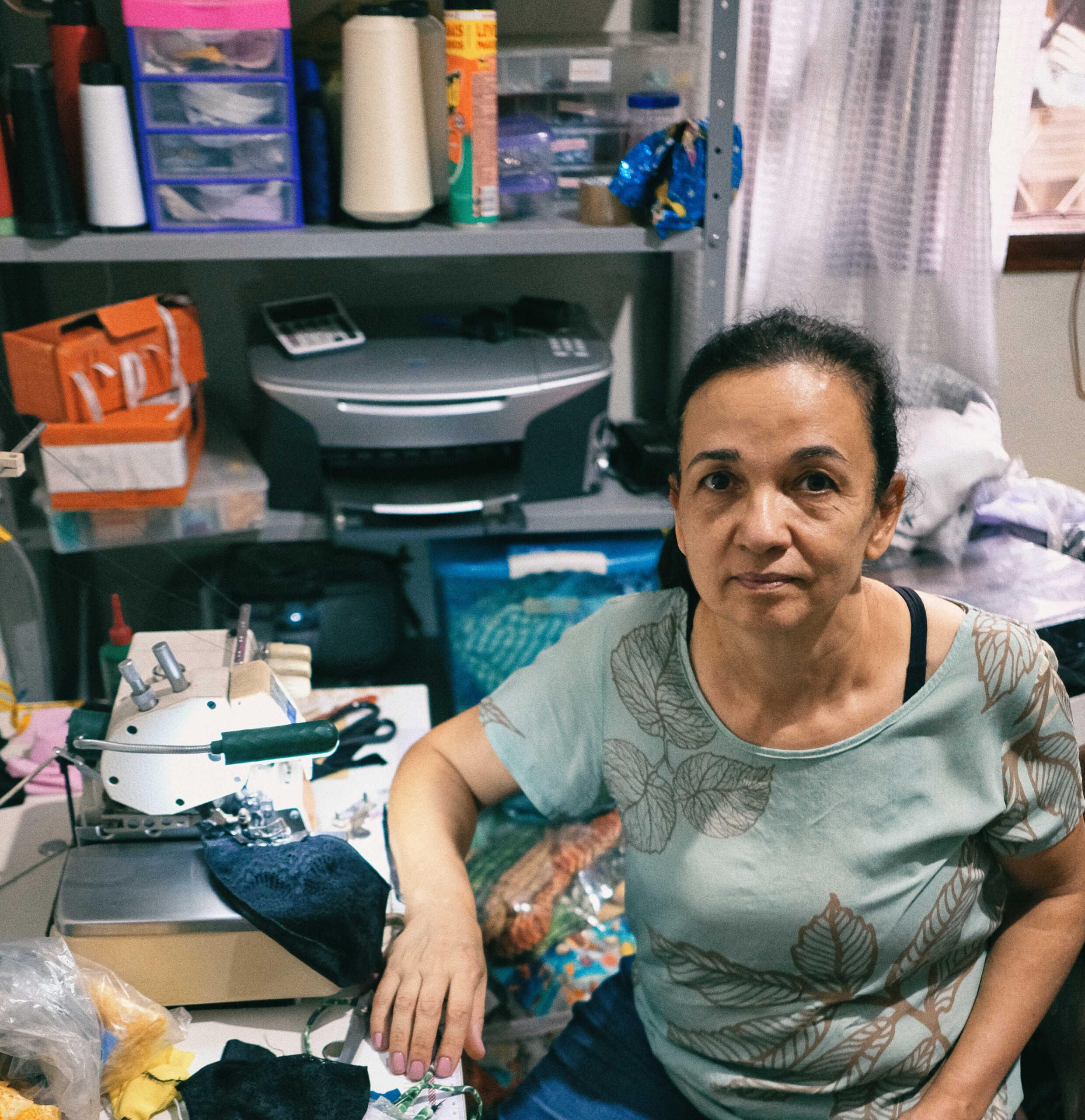
How do you describe yourself, and how do you introduce yourself professionally?
I like to introduce myself as a professional housekeeper. Although I graduated as an accountant, I don’t work as an accountant very often, what I do the most is taking care of the home – and sewing.
For how long have you been working as a seamstress?
For 40 years.
Is it true that you sewed your own marriage gown?
Yes, my mother and I did it all due to the relationship between cost and benefits. We looked up dresses to buy, for rent, and it was all too expensive. So we researched the fabrics, and we made my gown…the dress was so beautiful that we rented it several times later.
Cool! By then, did you have any sewing skills?
My mom, mostly! By that time I didn’t have much experience, she did it more than me and I helped. I learned it from her.
In your view, how is it to work with sewing and, overall, repairing clothes?
I treat everything as a kind of art. It’s a transformation…you take old clothes, a piece of fabric and turn it into something else…I think it is an art. Not just for me, but for all the people that sew. It is a job that I find most interesting and beautiful.
Why do you think repairing, maintenance and caring for clothes is important?
I think a lot about the benefits, because buying new clothes is expensive and not everyone has the conditions to do so. I’m standing here with a bag of clothes that a girl brought me to fix…they were all kept, and she told me that she needed clothes, because she had changed her job and those clothes weren’t fitting her anymore, so I renewed almost all of them, to renew her closet. That said, she will spend way less than a half that she would have in buying new clothes.
How do you describe your repairing process?
The clothes I make, mainly lingeries and bikinis, are not possible to repair, because the knit dissolves when you undo the piece. But what we call plain fabric, like jeans, for example, there’s always a broken zipper, a button, we make the hem or something tears up a little and you put a tag…it’s renewing, right? The client comes, shows me the clothes, and asks: “Can it be fixed?” Then I look it up to see what can be fixed and can’t be fixed, but normally, in 90% of the cases it is possible. The major parts are zippers and hems.
Can you tell us about something you sewed, or about a repair that you’ve done and it meant a lot to you?
When I graduated from high school, at the time it was called magisterium and there weren’t many work opportunities, my grandfather gave me this sewing machine and my mother taught me how to knit. The knitting made by the machine is such a beautiful thing, so interesting. So these clothes I made for me, when I began, are still beautiful till these days, and what is impressive is that I sewed a linen breech knitted and Carol, my daughter, still wears it to go to college! She says that every time she puts on this breech, people who understand about dressmaking keep looking at her and that makes her proud. Gabi, my other daughter, used to go to her classes wearing a blouse I made and one of the teachers wanted me to make a blouse alike my daughter’s for her…when I was pregnant of Gabi, I made a dress for me and the doctor wanted to copy it…those things lifts our egos.
How would you summarize your work philosophy in a few words?
Responsibility and client’s satisfaction…it makes me proud when I make lots of lingeries for ladies, and they say it every time that they open their drawers they remind me because there’s only clothes I’ve done, they say they only like the ones I make.